


| MOQ: | 1kg |
| Price: | US $3/kg |
| Standard Packaging: | Cylinder/Tank |
| Delivery Period: | 15 days |
| Payment Method: | L/C, T/T |
| Supply Capacity: | 20000 Tons/Year |
Propane gas (C3H8) is a colorless, odorless, and flammable hydrocarbon gas. It is commonly used as a fuel for various applications. Here are some key points about propane gas:
Properties: Propane gas possesses several important properties:
Flammability: Propane is highly flammable and can form explosive mixtures with air. It has a lower flammability limit (LFL) of 2.1% and an upper flammability limit (UFL) of 9.5%.
Odor: Pure propane gas is odorless, but an odorant called ethanethiol is added to propane for safety reasons. This gives propane its distinctive "rotten egg" or "skunk-like" odor, making it easier to detect in case of leaks.
Density: Propane gas is heavier than air, so it tends to sink and accumulate in low-lying areas.
Production: Propane is primarily produced as a byproduct of natural gas processing and petroleum refining. It is extracted from raw natural gas or crude oil through fractionation and purification processes.
Uses: Propane gas has numerous applications:
Residential and Commercial Heating: Propane is commonly used as a fuel for heating homes, buildings, and water. It is used in furnaces, boilers, space heaters, and water heaters.
Cooking and Grilling: Propane is widely used as a fuel for cooking appliances such as stoves, ovens, and grills.
Transportation: Propane can be used as an alternative fuel for vehicles. It is commonly used in forklifts, buses, and certain types of vehicles.
Agriculture: Propane is used in agricultural applications such as crop drying, weed control, and heating greenhouses.
Industrial Applications: Propane is used in various industrial processes, including metal cutting, soldering, heat treating, and as a fuel for industrial ovens and furnaces.
Recreational Uses: Propane is used for recreational purposes, such as camping stoves, lanterns, and portable heaters.
Safety Considerations: Propane gas is flammable and should be handled with caution. Here are some safety considerations:
Storage and Handling: Propane should be stored in appropriate containers or cylinders designed for flammable gases. It should be handled in well-ventilated areas, away from ignition sources and heat.
Leak Detection: The distinctive odorant added to propane makes it easier to detect leaks. If a propane leak is suspected, it is important to evacuate the area and contact emergency services.
Proper Ventilation: When using propane indoors, ensure proper ventilation to prevent the accumulation of propane gas and the potential for oxygen depletion.
Regular Maintenance: Propane equipment should be regularly inspected and maintained to ensure safe operation.
It is important to follow all safety guidelines and regulations when handling and using propane gas, including proper storage, handling, and ventilation practices, as well as adhering to local regulations and codes.
Please note that the handling and use of propane gas may be subject to specific safety regulations and requirements, depending on the jurisdiction and application.
| Transport Package: | 40L/47L/50L/118L/926L | Melting Point | -187.6 ºC |
| Trademark: | CMC | Boiling Point | -42.1 ºC |
| Specification | 99.50% | Production Capacity | 1, 000, 000ton/Year |
| Cylinder Pressure | 15MPa/20MPa | Valve | Cga350/Bwf-1 |
Specification:
Dot Class:2.2
State: Liquid
Purity: 99.5%
UN NO: UN1978
CAS NO: 74-98-6
Grade Standard: Industrial Grade
|
Specification |
≥99.5 |
% |
|
Methane (CH4) |
≤100 |
ppmv |
|
Ethane(C2H6) |
≤250 |
ppmv |
|
Propylene(C3H6) |
≤1000 |
ppmv |
|
Moisture(H2O) |
≤3 |
ppmv |
|
Sulfur |
≤1 |
ppmv |
|
Isobutane(C4H10) |
≤2500 |
ppmv |
|
N-butane(C4H10) |
≤1000 |
ppmv |
| Cylinder Specifications | Contents | |
| Cylinder Capacity | Valve | Weight |
| 47L | CGA350 | 19 kgs |
| 118L | BWF-1 | 45 kgs |
| 926L | BWF-1 | 375 kgs |
| ISO TANK | 10 Tons | |
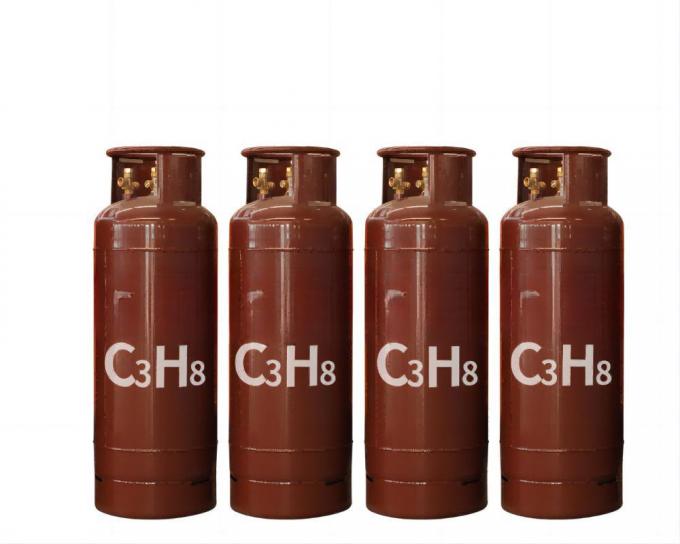
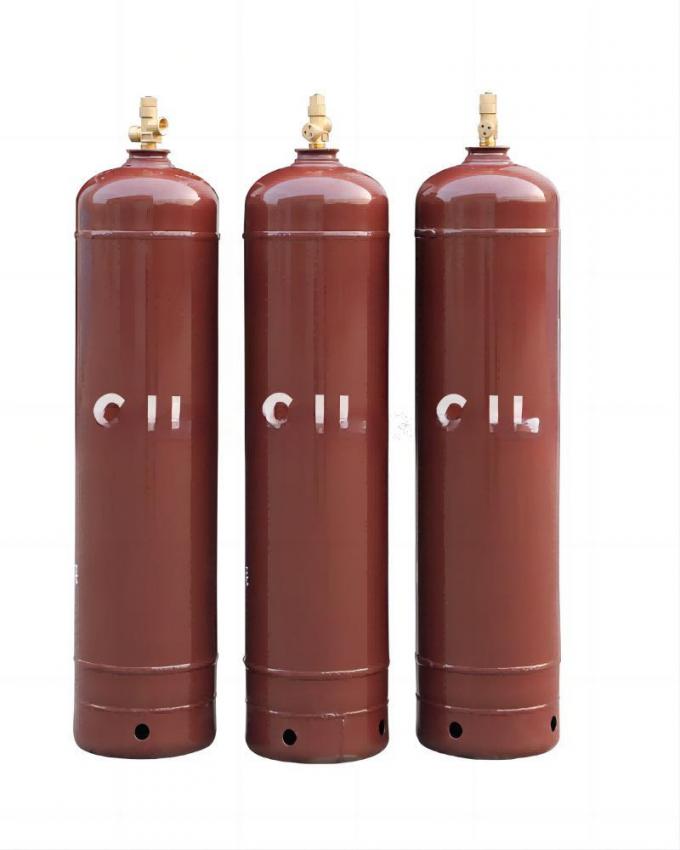
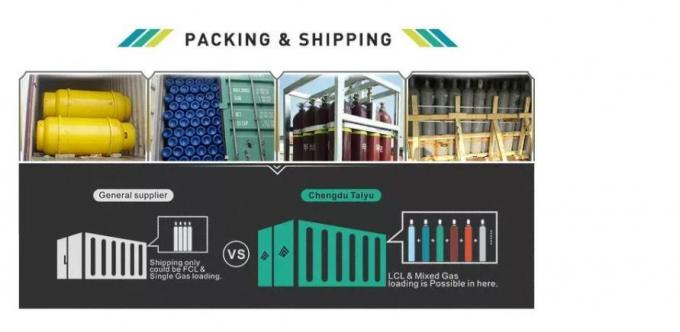

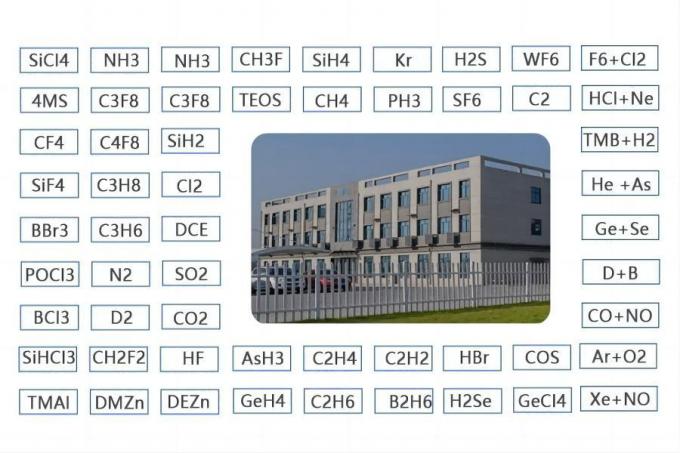
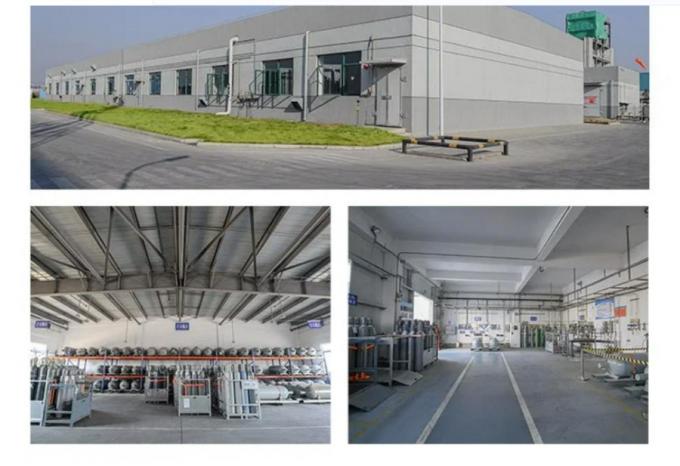

| MOQ: | 1kg |
| Price: | US $3/kg |
| Standard Packaging: | Cylinder/Tank |
| Delivery Period: | 15 days |
| Payment Method: | L/C, T/T |
| Supply Capacity: | 20000 Tons/Year |
Propane gas (C3H8) is a colorless, odorless, and flammable hydrocarbon gas. It is commonly used as a fuel for various applications. Here are some key points about propane gas:
Properties: Propane gas possesses several important properties:
Flammability: Propane is highly flammable and can form explosive mixtures with air. It has a lower flammability limit (LFL) of 2.1% and an upper flammability limit (UFL) of 9.5%.
Odor: Pure propane gas is odorless, but an odorant called ethanethiol is added to propane for safety reasons. This gives propane its distinctive "rotten egg" or "skunk-like" odor, making it easier to detect in case of leaks.
Density: Propane gas is heavier than air, so it tends to sink and accumulate in low-lying areas.
Production: Propane is primarily produced as a byproduct of natural gas processing and petroleum refining. It is extracted from raw natural gas or crude oil through fractionation and purification processes.
Uses: Propane gas has numerous applications:
Residential and Commercial Heating: Propane is commonly used as a fuel for heating homes, buildings, and water. It is used in furnaces, boilers, space heaters, and water heaters.
Cooking and Grilling: Propane is widely used as a fuel for cooking appliances such as stoves, ovens, and grills.
Transportation: Propane can be used as an alternative fuel for vehicles. It is commonly used in forklifts, buses, and certain types of vehicles.
Agriculture: Propane is used in agricultural applications such as crop drying, weed control, and heating greenhouses.
Industrial Applications: Propane is used in various industrial processes, including metal cutting, soldering, heat treating, and as a fuel for industrial ovens and furnaces.
Recreational Uses: Propane is used for recreational purposes, such as camping stoves, lanterns, and portable heaters.
Safety Considerations: Propane gas is flammable and should be handled with caution. Here are some safety considerations:
Storage and Handling: Propane should be stored in appropriate containers or cylinders designed for flammable gases. It should be handled in well-ventilated areas, away from ignition sources and heat.
Leak Detection: The distinctive odorant added to propane makes it easier to detect leaks. If a propane leak is suspected, it is important to evacuate the area and contact emergency services.
Proper Ventilation: When using propane indoors, ensure proper ventilation to prevent the accumulation of propane gas and the potential for oxygen depletion.
Regular Maintenance: Propane equipment should be regularly inspected and maintained to ensure safe operation.
It is important to follow all safety guidelines and regulations when handling and using propane gas, including proper storage, handling, and ventilation practices, as well as adhering to local regulations and codes.
Please note that the handling and use of propane gas may be subject to specific safety regulations and requirements, depending on the jurisdiction and application.
| Transport Package: | 40L/47L/50L/118L/926L | Melting Point | -187.6 ºC |
| Trademark: | CMC | Boiling Point | -42.1 ºC |
| Specification | 99.50% | Production Capacity | 1, 000, 000ton/Year |
| Cylinder Pressure | 15MPa/20MPa | Valve | Cga350/Bwf-1 |
Specification:
Dot Class:2.2
State: Liquid
Purity: 99.5%
UN NO: UN1978
CAS NO: 74-98-6
Grade Standard: Industrial Grade
|
Specification |
≥99.5 |
% |
|
Methane (CH4) |
≤100 |
ppmv |
|
Ethane(C2H6) |
≤250 |
ppmv |
|
Propylene(C3H6) |
≤1000 |
ppmv |
|
Moisture(H2O) |
≤3 |
ppmv |
|
Sulfur |
≤1 |
ppmv |
|
Isobutane(C4H10) |
≤2500 |
ppmv |
|
N-butane(C4H10) |
≤1000 |
ppmv |
| Cylinder Specifications | Contents | |
| Cylinder Capacity | Valve | Weight |
| 47L | CGA350 | 19 kgs |
| 118L | BWF-1 | 45 kgs |
| 926L | BWF-1 | 375 kgs |
| ISO TANK | 10 Tons | |





